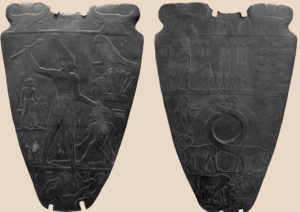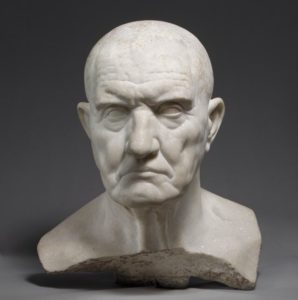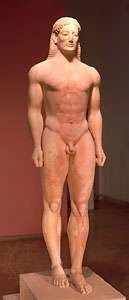In Unit 2 we discussed the art of Ancient Egyptian, Mesopotamian, Greek, and Rome. We looked at many artworks and compared different cultures and civilizations art. For instance, most Greek figures were influenced by animals and were occasionally created using different animal body parts. The Egyptians were further involved in creating countless monumental sculptures of their pharaohs and queens. Other than limestone the Egyptians also used painted wood and sandstone and later used gold and bronze to strengthen their sculptures, while Greeks would use marble and bronze. The difference in religious beliefs between the two time periods is the major difference because Egyptians had a very solid belief in the after-life and helping their dead find a better life after death whereas the Greeks lacked such belief. Ancient Greece borrowed various of their concepts from the Egyptians and Mesopotamians to improve their individual and independent artistic identity through painting, sculpture, and architecture. Though the Romans got many ideas from the Greeks, their art was more complex and defined. The Romans were a practical people, in their original works, the observation was key. One of significant difference between the two cultures is their approach towards art. The Greek was more philosophical and idealistic, while the Romans were more realistic and somehow extravagant in their approach to sculpture.
Examples:

The Narmer Palette is one of the most famous artworks of Ancient Egypt. The palette, which has a shield-shape, is decorated on both sides. Each side of the palette Narmer’s name is inscribed within a serekh flanked by two cows heads with the faces of human females which face forward. The top of the palette is garnished with what looks to be the illustration of the two-horned beast. Place on the very top or the Palette on the left and right top, this is also repeated on the back as well as the front. This creates a balance and symmetrical design. In the center of the two horned creatures is the emblem of Narmer’s name symbolically illustrated in a form of a serekh, adding to the symmetry. The Narmer Palette shows slight alterations of style from other works of art from that era. Within the carving itself, Narmer is illustrated, and positioned in an uncharacteristically, by strategically being placed in the center of the image, while illustrated to be larger, when compared to the rest of the composition, and illustrated figures.

Marble bust of a man is a roman artwork, this bust is among the style of veristic portraits, because of their seemingly harsh and severe realism, which was emphasized above heroism or beauty. Because the Romans considered facial features to be the best conveyors of personality, age, and wisdom gained through long, hard years of life, these characteristics and features were emphasized in portraiture in order to portray the qualities they valued most highly.

Kuros is a Greek statue displaying a young standing male. It shows a great degree of naturalism, soft human form. The figure is nude, which in Greek art appreciatively represents the body. The scripture displays a standing figure, facing straight forward, and standing with its weight equally distributed on its two legs; avoids any twisting, turning, or bending. The repetition of shapes produces a decorative pattern, which is continued in details, such as in the curves of the eyebrow and eyelid, the shapes at the kneecaps, and at the elbows, to make it resemble the natural human figure.

